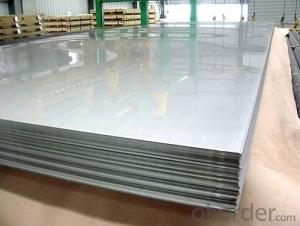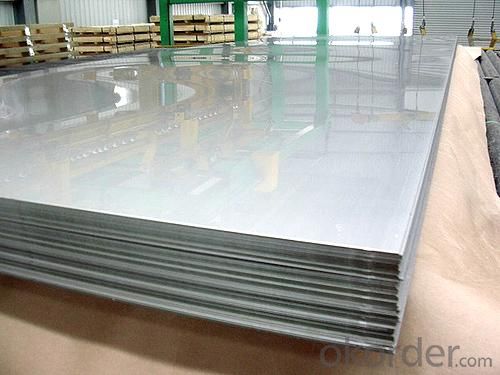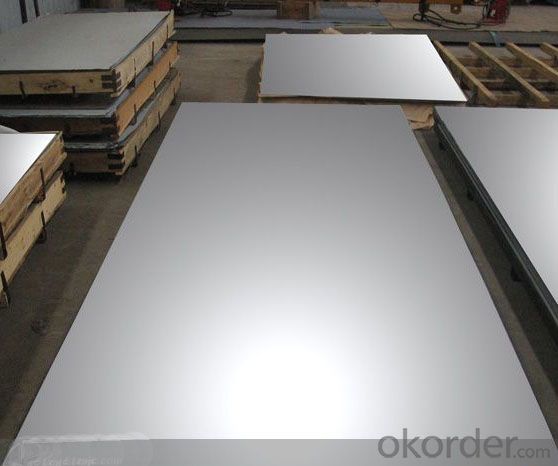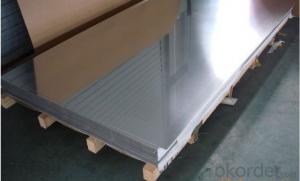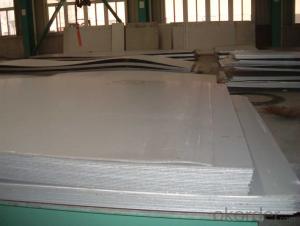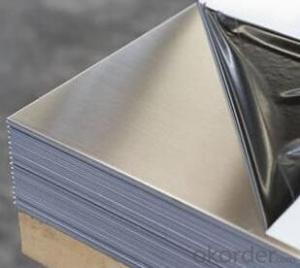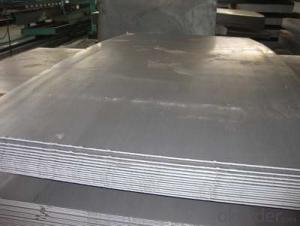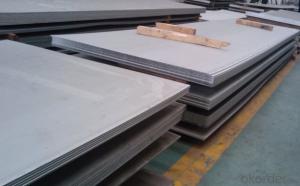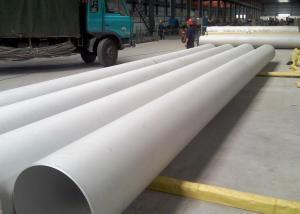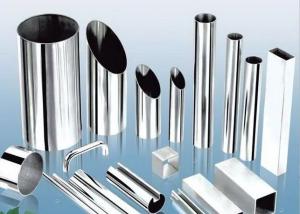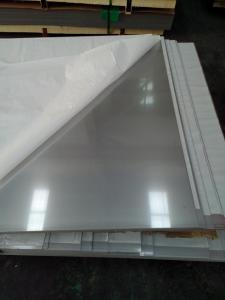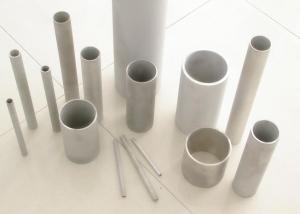Stainless Steel plate 316 with No.4 Surface Treatment
- Loading Port:
- Shanghai
- Payment Terms:
- TT OR LC
- Min Order Qty:
- 500 m.t.
- Supply Capability:
- 5000000 m.t./month
OKorder Service Pledge
OKorder Financial Service
You Might Also Like
Hot sale stainless steel sheet 201/202/304/304l/310S/309S/316L/316Ti/316/321,410/420/430/444/443/409L, and 904L.
Description of Stainless Steel Sheet:
Description | steel sheet,hot rolled steel sheet,cold rolled steel sheet, steel sheet,sheet,steel plate |
Standard | ASME, ASTM, EN ,BS,GB,DIN, JIS etc |
Application | Steel sheet applies to construction field, ships building industry, petroleum & chemical industries, war and electricity industries, food processing and medical industry, boiler heat exchanger, machinery and hardware fields. |
Packaging | Standard export sea-worthy packing |
Delivery time | 10-30 days |
Quality | No.1 |
Productivity | 500 tons/Day |
Note | Our company has cooperative relation between the domestic agents. Stainless steel sheet can be made accordingto the customers requirements. Fasten delivery. Quality assured. |
Contacts | If you have any question,please feel free contact me. |
Stainless steel sheet surface finish characteristics
Surface finish | Characteristics and application |
2B | The surface brightness and flatness of no2B is better than no2D. then through a special surface treatment to improve its mechanical properties,No2B could nearly satisfy comprehensive uses. |
No.1 | Polished with abrasive belt of grit#100-#200, have better brightness with discontinuous coarse stria, used as inner and external ornaments for building, electrical appliances and kitchen utensils etc. |
No.4 | Polished with abrasive belt of grit #150-#180,have better brightness with discontinuous coarse stria, but thinner than No3, are used as bathtub buildings inner and external ornaments electrical appliances kitchen utensils and food processing equipment etc. |
HL | Polished with abrasive belt of grit #150-#320 on the NO.4 finish and has continuous streaks, mainly used as buildings ornaments elevators, door of building, frontal plate etc. |
BA | Cold rolled, bright annealed and skin-passed, the product have excellent brightness and good reflexivity like mirror, kitchen apparatus, ornament etc. |
8K | The product have excellent brightness and prefer reflexivity can to be the mirror. |
Main Features of stainless steel sheet :
•Escalator, Elevator, Doors
•Furniture
•Production tools, Kitchen appliances, freezers, cold rooms
•Auto Parts
•Machinery and Packaging
•Equipment and Medical devices
•Transport system
Product Details:
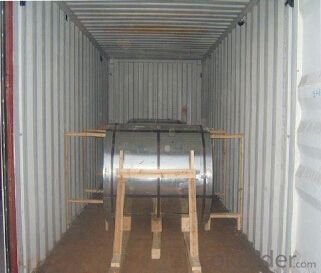
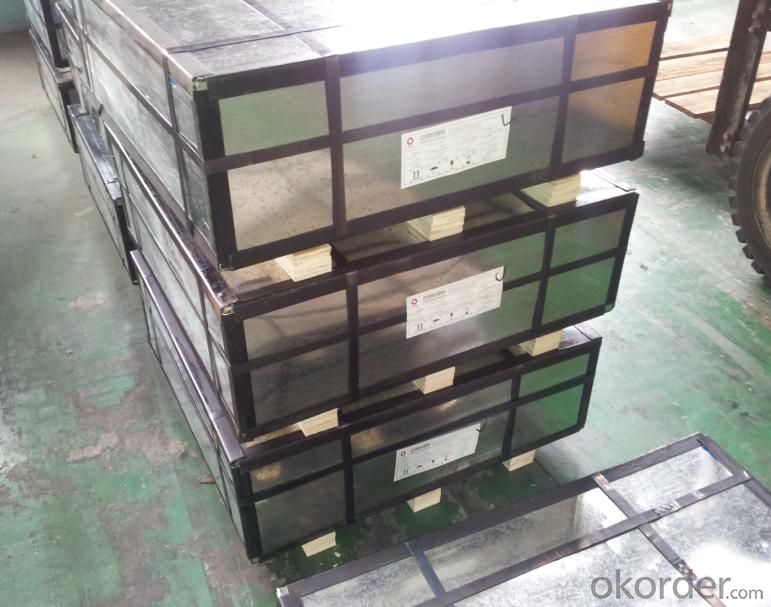
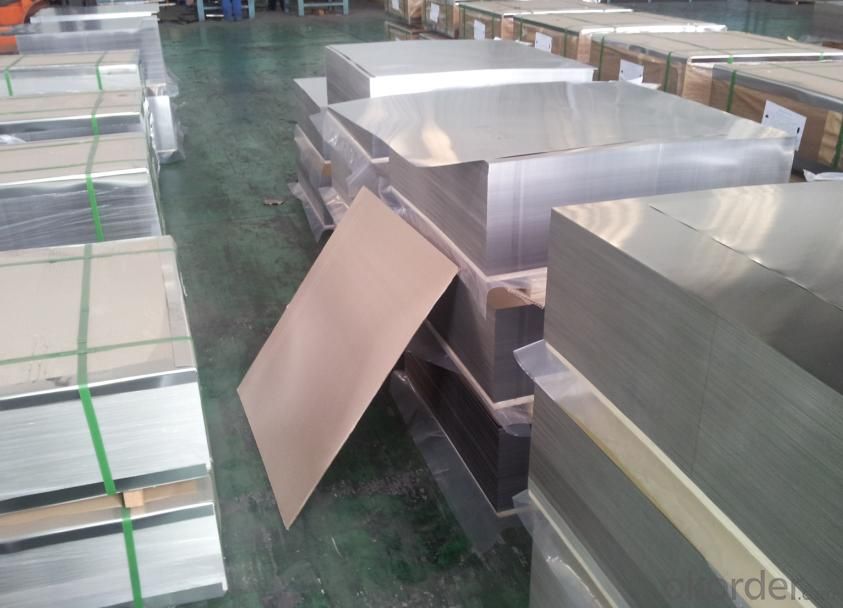
Sandard Seaworth Packing(wooden packing with water proof paper)
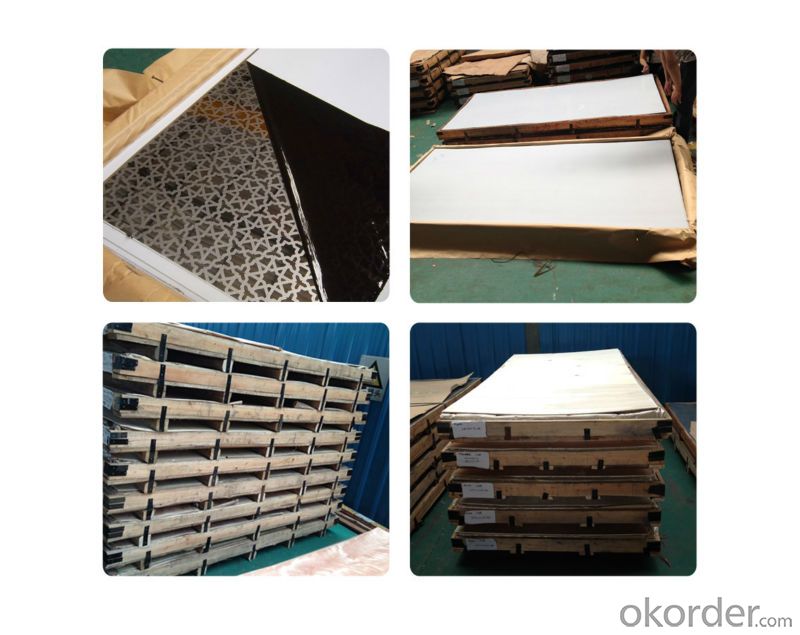
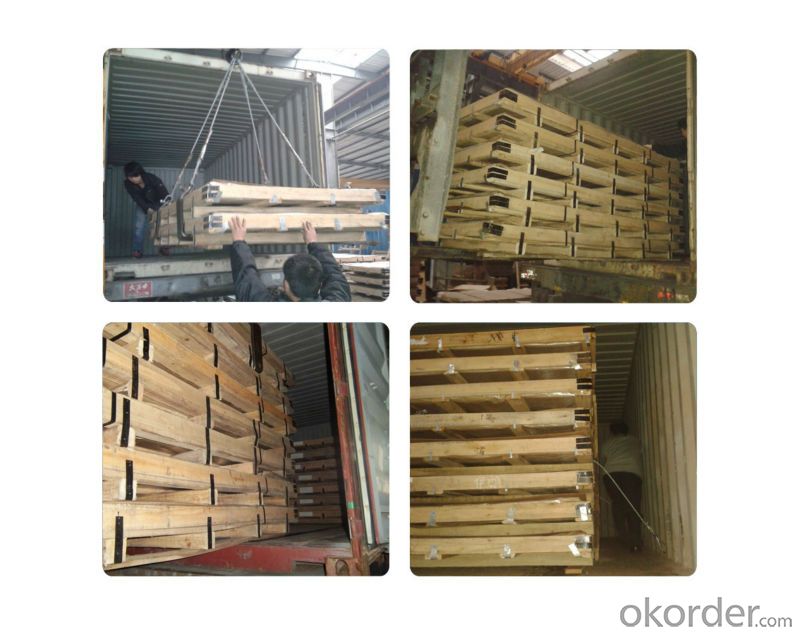
FAQ:
1. What's the quality?
very fine
2. How long get reply?
within 24 hours
If you have any question about stainless steel sheets,donot forget to sending the email to Us! You will get the competitive Price and have a very good experience about the Buying Process! CNBM International Corporation is always your trustful friend!
- Q: What is the price per square foot for stainless steel sheets?
- The price per square foot for stainless steel sheets can vary depending on factors such as thickness, grade, and quantity. It is recommended to contact suppliers or check their websites for the most accurate and up-to-date pricing information.
- Q: What are the different types of stainless steel sheet thicknesses available?
- There is a wide variety of stainless steel sheet thicknesses to choose from, each serving different purposes and applications. The most commonly used thicknesses range from 0.4mm to 3.0mm, with increments of 0.4mm. These sheets are typically utilized in general applications such as construction, automotive parts, and household appliances. For more specialized applications, one can find thinner stainless steel sheets with thicknesses ranging from 0.1mm to 0.3mm. These thinner sheets are commonly employed in industries like electronics, telecommunications, and medical equipment manufacturing, where precise and delicate components are necessary. On the other hand, thicker stainless steel sheets, starting from 3.0mm and going up to 20mm or more, are reserved for heavy-duty applications like industrial machinery, shipbuilding, and construction projects that require exceptional structural integrity and durability. It's important to keep in mind that the available stainless steel sheet thicknesses may vary depending on the manufacturer and the intended use. Moreover, custom thicknesses can be manufactured to meet the specific requirements of a project.
- Q: Can stainless steel sheets be used for decorative backsplashes?
- Yes, stainless steel sheets can be used for decorative backsplashes. Stainless steel is a versatile and durable material that is commonly used in kitchen and interior design. It offers a sleek and modern look, making it a popular choice for contemporary and industrial-style kitchens. Stainless steel backsplashes are not only visually appealing but also highly functional, as they are resistant to heat, stains, and water. Moreover, stainless steel is easy to clean and maintain, making it a practical option for a backsplash in a busy kitchen. Whether you prefer a polished, brushed, or patterned finish, stainless steel sheets can be customized to suit your aesthetic preferences, allowing you to create a stylish and eye-catching backsplash that complements your overall design scheme.
- Q: Can stainless steel sheets be used for elevator doors or panels?
- Yes, stainless steel sheets can be used for elevator doors or panels. Stainless steel is a popular choice for elevator applications due to its durability, corrosion resistance, and sleek appearance. It provides a clean and modern look, making it a suitable material for elevator doors or panels.
- Q: How about stainless steel grades?
- According to the composition can be divided into Cr (400 Series), Cr Ni system (300 Series), Cr Mn Ni (200 Series) and the precipitation hardening systems (Series 600). 200 series - chromium nickel manganese austenitic stainless steel 300 series - chromium nickel austenitic stainless steel 301 - ductility, used for molding products. It can also be hardened rapidly by mechanical processing. Good weldability. The abrasion resistance and fatigue strength are better than 304 stainless steel. 302 - 304 with corrosion resistance, due to the relatively high carbon intensity. 303 - by adding a small amount of sulfur and phosphorus, it is easier to cut than 304.
- Q: Can stainless steel sheets be used for elevator cabs?
- Yes, stainless steel sheets can be used for elevator cabs. Stainless steel is a common material choice for elevator cabs due to its durability, aesthetic appeal, and resistance to corrosion. It provides a sleek and modern look while also being able to withstand the wear and tear of daily use in elevators.
- Q: What glue does the board and the stainless steel stick to?
- Epoxy resin (adhesive) generally refers to the epoxy resin as the main body of the adhesive, epoxy resin should generally include epoxy curing agent.
- Q: What are the different types of stainless steel sheet alloys?
- Stainless steel sheet alloys come in various types, each possessing unique properties and characteristics. Below are some of the commonly used types: 1. Austenitic stainless steel, the most widely used alloy, is known for its excellent formability and high corrosion resistance. Industries like food processing, pharmaceuticals, and architecture often use grades like 304 and 316. 2. Ferritic stainless steel, which has a higher carbon and lower chromium content compared to austenitic steel, offers good corrosion resistance and high strength. It finds applications in areas requiring high temperature resistance, such as automotive exhaust systems. 3. Martensitic stainless steel alloys, with higher carbon and lower chromium content than both austenitic and ferritic steels, are valued for their high strength, hardness, and corrosion resistance. They are commonly used in cutlery, surgical instruments, and turbine blades. 4. Duplex stainless steel combines the properties of austenitic and ferritic steels, providing a balance between strength and corrosion resistance. It is widely used in chemical processing, oil and gas, and marine industries. 5. Precipitation-hardening stainless steel is heat treatable and can achieve high strength and hardness through a precipitation-hardening process. It is critical in aerospace and defense applications that require both strength and corrosion resistance. These examples represent only a fraction of the available stainless steel sheet alloys. The choice of alloy depends on specific application requirements, such as corrosion resistance, strength, and temperature resistance.
- Q: Are stainless steel sheets suitable for outdoor railings?
- Yes, stainless steel sheets are suitable for outdoor railings. Stainless steel is highly resistant to corrosion and has excellent durability, making it a popular choice for outdoor applications. It is also able to withstand harsh weather conditions, including rain, snow, and UV radiation, without losing its structural integrity or appearance. Stainless steel railings are low maintenance and easy to clean, making them a practical and long-lasting option for outdoor spaces. Additionally, stainless steel sheets offer a sleek and modern aesthetic, enhancing the overall look and feel of any outdoor railing system.
- Q: Are stainless steel sheets good for high-temperature applications?
- Yes, stainless steel sheets are excellent for high-temperature applications. Stainless steel has a high melting point, typically ranging from 1400 to 1450 degrees Celsius (2552 to 2642 degrees Fahrenheit), making it suitable for use in environments with elevated temperatures. Additionally, stainless steel exhibits excellent resistance to oxidation at high temperatures, which helps prevent the formation of scales or rust that can weaken the material. It also has good thermal conductivity, allowing for efficient heat transfer. These properties make stainless steel sheets a reliable choice for a wide range of high-temperature applications, including industrial furnaces, heat exchangers, boilers, and exhaust systems.
Send your message to us
Stainless Steel plate 316 with No.4 Surface Treatment
- Loading Port:
- Shanghai
- Payment Terms:
- TT OR LC
- Min Order Qty:
- 500 m.t.
- Supply Capability:
- 5000000 m.t./month
OKorder Service Pledge
OKorder Financial Service
Similar products
Hot products
Hot Searches
Related keywords
